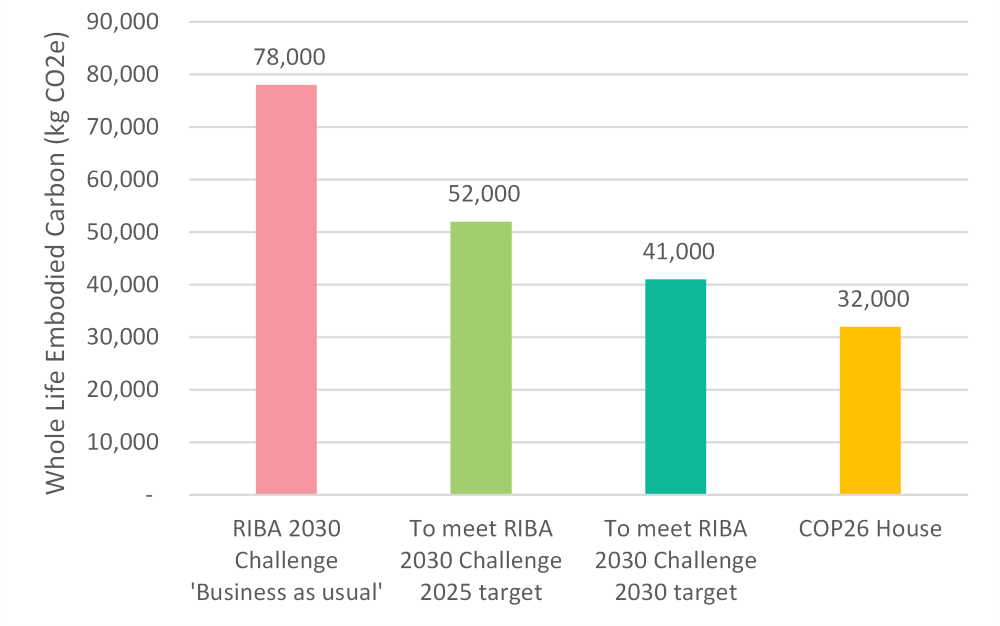The Carbon Impact of Domestic Buildings
From its inception, one of the key aims of the COP 26 House project was to minimise embodied carbon emissions, to build a truly zero carbon house across its life cycle.
To minimise embodied carbon, the architect of the COP26 House, Peter Smith from Roderick James Architects, focused on efficient use of products and choosing those with lower embodied carbon. Wherever possible, Peter selected timber-based products – for their (generally) lower embodied carbon, but also their aesthetic, comfort and health characteristics.
The whole life embodied carbon assessment of the house carried out by Circular Ecology shows that Beyond Zero Homes’ COP26 House beats the RIBA 2030 Challenge target by a substantial 22%.

For more results from the whole life embodied carbon assessment, see:
The building, operation and maintenance of domestic buildings accounts for 27% of total UK carbon emissions. In addition to a commitment by the UK Government to become Net Zero by 2050, as a country we need to build 350,000 new homes per year to meet current demand.
With the average 100 square metre house emitting 300 tonnes of carbon, to offset the carbon for these new homes alone would need 100 million trees to be planted every year.
Using timber in construction would help avoid this problem, due to its ability to store – rather than create – carbon in its production. This is in contrast to the other main building materials – steel, brick and concrete.
Timber is carbon negative from cradle to gate. A key recommendation of the Commission on Climate Change in 2018 was to increase the use of wood in construction. Their report, UK Housing: Fit for the Future, estimated that if 270,000 houses in the UK were built per year from timber, this would store 3 million tonnes of carbon dioxide.


Wood offers a low-carbon, environmentally friendly alternative to traditional building materials, plus delivers on innovative design, speed, cost & resource efficiency, and health and well-being.
See Wood for Good for more information.
Beyond Timber
The same conscious approach will be taken in decisions for all other materials used in the house construction – from foundations to wall and floor finishes, to heating and water systems, to appliances and furnishings – looking for products produced in line with circular economy, low carbon principles, ensuring water efficiency and climate resilience.
